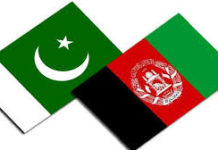By Muhammad Luqman
Pakistan’s educational institutions have moved up on the table of Asia University Rankings 2018, with Quaid-i-Azam University and COMSATS Institute of Information Technology — two of the leading institutions—improving their position, according to media reports.
Pakistan has performed well in the latest Times Higher Education (THE) Asia University Rankings, increasing its representation overall as 10 Pakistani educational institutions have made it to the top table.
According to the latest rankings, Quaid-i-Azam University is now ranked at 79th place — up from the 121-130 band — largely due to a big increase in its citation impact.
“, COMSATS Institute of Information Technology has jumped to 125th place, from the 141-150 band, also primarily due to an improvement in its citation performance.”, it added.
Pakistan now claims 10 places in the table — up from 7 last year — due to the expansion of the table to include over 350 universities this year, up from around 300 last year.
Times Higher Education stated that while the expansion is good news for Pakistan’s overall representation, the increased competition means that four of the country’s universities have fallen down the table.
It said Pakistan achieved a higher average score this year, and, on average, its universities saw a significant improvement in their citation performance — one of its traditionally weaker areas. It also picked up points in other areas such as international co-authorship.
However, the amount of research income and industry income it received per staff fell.
With regard to Pakistan, Phil Baty — the editorial director of global rankings at Times Higher Education — said, “It is a fantastic achievement that Pakistan now has 10 universities in the Asia rankings and that its two leading universities have risen up the table.
“But the country’s poor research environment, not helped by lack of funding, is preventing the nation from fulfilling its higher education potential.
“Research must be made a priority if the country wants to stand out among the heavy competition in the world’s largest continent.”
On the other hand, in context of South Asia as a whole, Baty said, “The South Asian region has increased its representation in the 2018 THE Asia University Rankings, but is struggling to maintain its standing in the face of competition from the east and southeast Asia.
“India is still the region’s leading higher education country, with 42 representatives, up from 33 last year, but several of its institutions have declined.
“Pakistan’s performance was also mixed; the country has 10 representatives, up from 7 last year, and while its two leading universities have made gains, others have fallen.
Bangladesh is back in the table, after losing out last year, but Sri Lanka’s sole representative, the University of Colombo, has plummeted from the 251+ band to the 301-350 band.
According to the latest THE Asia Rankings, the rise of China continued.
The People’s Republic now claims almost one in five places in the rankings and several of its institutions have made strong gains, not least Tsinghua University, which is now the country’s top-ranked institution for the first time in the table’s six-year history.
The National University of Singapore holds onto the overall number one spot after improving its scores in almost all areas.
“But many Asian nations are feeling the competition. While India, Japan, Pakistan, South Korea, Taiwan, and Turkey have all increased their representation, several of their universities have fallen down the list.
“These countries will need to work hard to stand out among the heavy competition in the world’s largest continent,” THE Rankings said.















